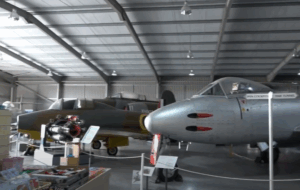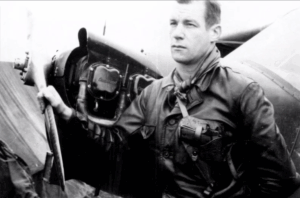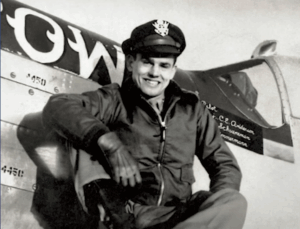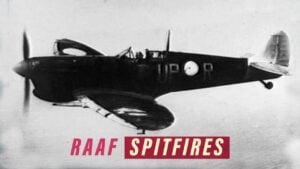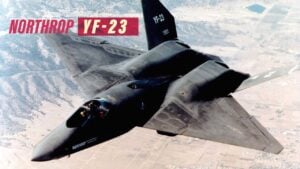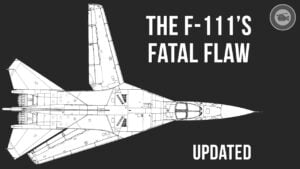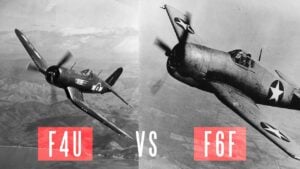The Story of the Ghost Plane of WWII That Landed Solo

Vintage Aviation / YouTube
A Mysterious Landing
On a cold November night in 1944, with World War II at its height, something unusual occurred over Belgium. A lone B-17 bomber, clearly damaged and barely holding together, drifted out of the clouds. Its engines coughed and sputtered as it approached an Allied base. The plane managed a smooth landing despite its battered condition. When the ground crew, led by Major John V. Crisp, rushed toward the aircraft, they expected to find a scene of chaos. Instead, the hatch opened to reveal a silent cabin. There were no cries for help, no movement, only an eerie calm. Parachutes were neatly stowed, and a few half-eaten chocolates rested on a ledge, as if the crew had simply stepped away for a moment. Yet, they were not there at all. The only clue left behind was a cryptic message scrawled in a code book.
The incident left many questions unanswered. How had the bomber managed to fly through enemy skies with no crew onboard? What had become of the men who had been expected to fill its seats? The mystery deepened as the aircraft, which later became known as the Ghost Plane, continued to stir the imaginations of those who learned its story. In the days following its landing, rumors spread and investigations began, but the truth behind the empty bomber remained elusive.

The Flight and Its Aftermath
The B-17 bomber, often called the Flying Fortress, was a symbol of American air power during World War II. Known for its durability and heavy armament, it played a crucial role in the strategic bombing campaigns over Europe. On that November night, the bomber’s mission had been to fly a daylight raid against enemy targets. The plane was part of a larger formation that had been tasked with striking a specific objective in German-occupied territory. However, due to severe damage or other unknown factors, the crew abandoned the aircraft during flight, leaving it to land on its own.
After the landing, ground personnel found the aircraft surprisingly intact. Despite the visible damage on its exterior, the internal cabin was undisturbed, with equipment still in place and the seats empty. The scene prompted immediate questions among Allied investigators. An inquiry was launched, and the records from the incident became part of a declassified Air Intelligence Weekly document dated March 11, 1945. This document detailed the unusual circumstances of the landing and recorded the impressions of those who later examined the aircraft. The account described a bomber that had managed to return to base, defying expectations by landing safely even after the crew had vanished.

A Legacy of Mystery
The story of the ghost plane is not merely a tale of a damaged bomber landing alone. It reflects the chaos and unpredictability of wartime operations. The B-17 had been built to endure enemy fire, and its design allowed it to absorb damage and still maintain some level of flight. Stories from the time spoke of other bombers that limped back to base with engines failing and sections of the fuselage missing, yet still managing to protect their crews. Such accounts made the idea of an unmanned, yet successfully landed, aircraft seem almost possible under the harsh conditions of war.
Historical records indicate that the bomber had completed a hazardous mission, facing enemy fighters and severe anti-aircraft fire. The loss of the crew was not confirmed by eyewitnesses, but the absence of any sign of struggle inside the cabin led investigators to suspect that the crew had evacuated the aircraft under extreme duress. Their fate remains one of the many mysteries of the air war. This empty bomber, landing solo in a field of chaos, stands as a reminder of the uncertainties faced by airmen during the conflict.

Unanswered Questions and Lasting Impact
The ghost plane’s discovery left a lasting impact on those who studied the incident. The declassified interrogation of a German fighter group commander provided additional context about the engagement that led to the bomber’s unusual return. His detailed observations revealed that during the raid on December 12, 1944, RAF Lancaster bombers had been heavily engaged by German Me-109 fighters. His account described the intense aerial combat, the losses incurred by both sides, and the formation weaknesses that allowed enemy fighters to target isolated bombers. Though his interrogation focused on the overall battle and tactics, it also raised questions about how a bomber could fly back with no crew.
This mysterious occurrence became part of wartime lore, discussed among pilots and historians as an example of both the resilience of aircraft and the strange events that can occur in combat. The Ghost Plane of WWII, as it came to be known, serves as an enduring example of the complexities of air operations during the war. Its silent, unmanned landing continues to spark debate and inquiry among those interested in the history of military aviation.















